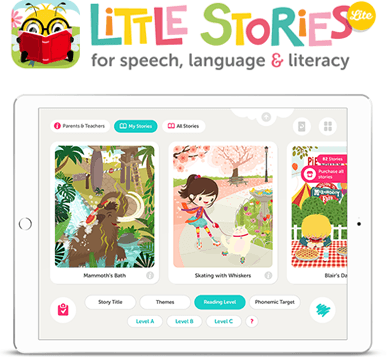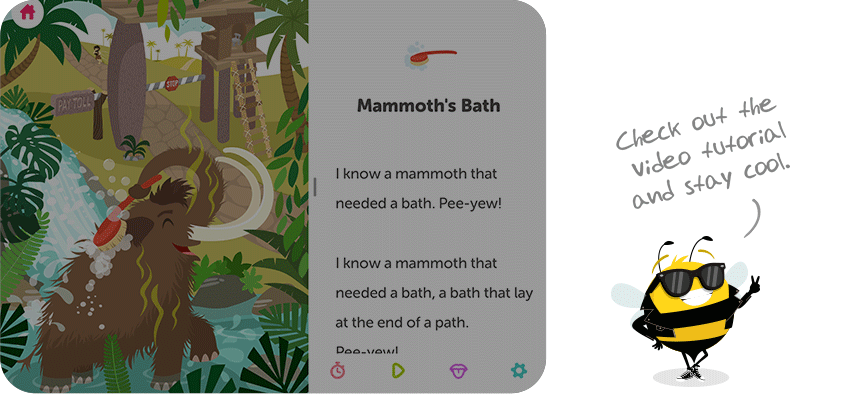
Little Bee Speech
Apps for Speech and Language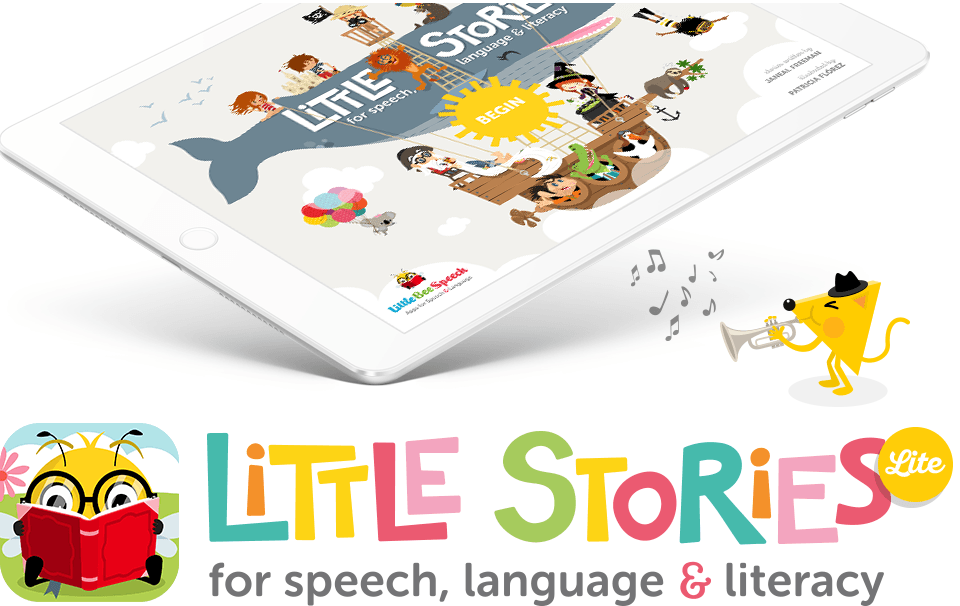
Little Stories
Lite
Little Stories Lite is an app for iPad with carefully crafted stories that target speech, language and literacy. Each of these little story gems comes in a package—a package bursting with supporting curriculum and beautiful, full-color illustrations.
For iPad, iOS 9+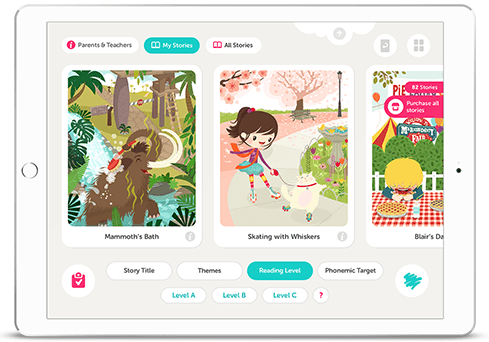
Get 3 stories
Little Stories Lite is a free download that offers 3 free stories. Not only do you get the stories, you get the associated curriculum and activities, too. It’s a lot for a free app! Additional stories can be purchased for $0.99 each. There are also story packs available to purchase at a discount.
-
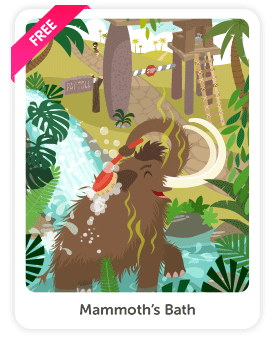
Reading Level:
A (FK 0.9)
Phonemic Target:
th-mixed
Verb Tense:
Tense Shift
Point of View:
1st Person
-
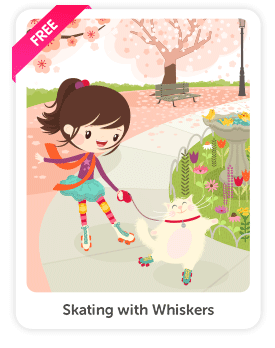
Reading Level:
B (FK 2.1)
Phonemic Target:
sc, /sk/ blend
Verb Tense:
Present
Point of View:
3rd Person
-
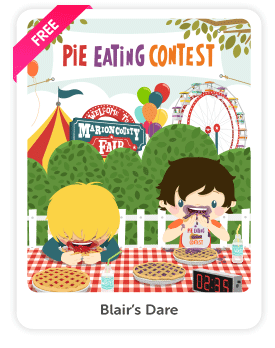
Reading Level:
C (FK 2.7)
Phonemic Target:
air-mixed
Verb Tense:
Conditional
Point of View:
2nd Person
Research-based Curriculum
Little Stories Pro draws on a wealth of research and is designed to support reading fluency and comprehension as well as receptive and expressive language objectives.

- Reading & Literacy
- Phonemic awareness
- Reading fluency
- Reading comprehension
- Story structure awareness
- Story tradition and genre exploration
- Receptive Language Skills
- Attention and listening
- Vocabulary acquisition
- Story structure and comprehension
- Question processing
- Expressive Language Skills
- Speech production
- Story sequencing
- Story retelling
- Question answering
Each story is exactly
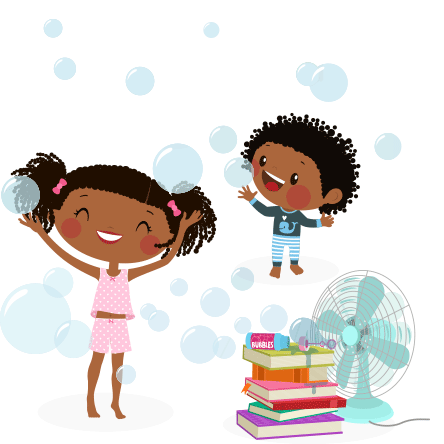
A child’s language and literacy development is a big deal—for all of us! So why do we start with something as small as a 100-word story?
For one thing, it keeps a story simple and manageable. A child quickly reaches “the end” and feels a sense of accomplishment right away. But it’s more than that. When we kept a story small, we realized that structures stood out and speech practice focused. Little felt so very big!
100-word stories are also great for practicing reading fluency, measuring reading accuracy, assessing speech fluency, and facilitating repeated reading exercises.
Little Stories with a Lot
Each story has been carefully crafted and is loaded with potentials for learning. Our stories can be used and enjoyed in a variety of ways.
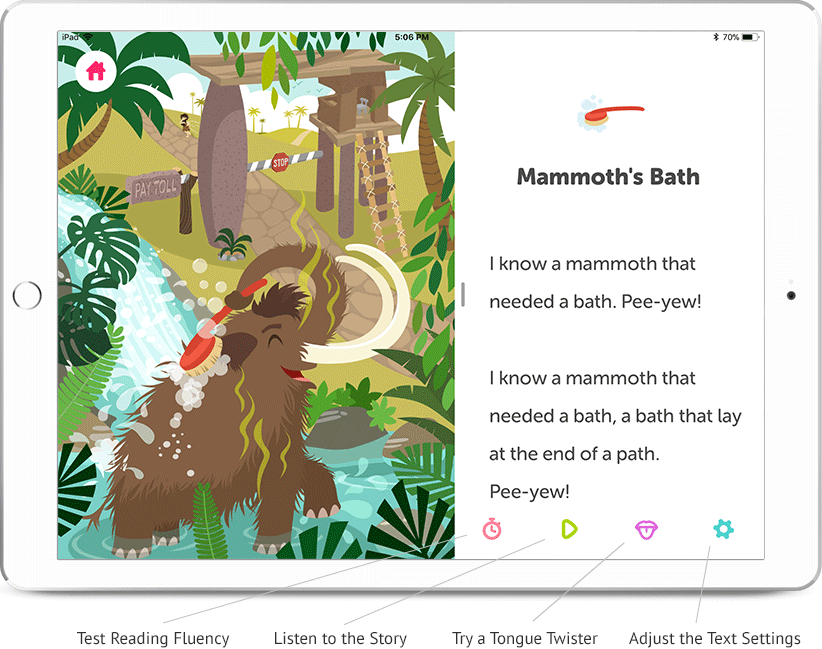

Saturated with Specific Sounds
Each story is sound saturated with at least 20 instances of the target sound. Current phonemic targets include:

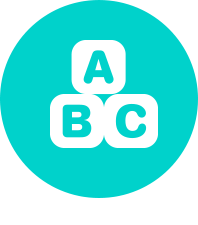
Leveled for Reading
All stories are leveled according to their narrative complexity, vocabulary difficulty, and age appropriateness.

Within these categories (A, B & C), the stories are sorted according to their Flesch-Kincaid scores.
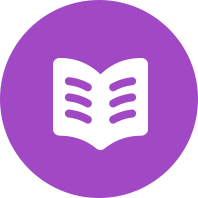
Written for Growth and Development
The stories are categorized into 26 themes that teach a variety of concepts. The app easily sorts all the stories by title, theme, phonemic target, and reading level.
- Themes include:
- Communicating with Others
- Having Fun with Others
- Having Compassion for Others
- Being Kind & Helping Others
- Accepting Help from Others
- Working as a Team
- Working Independently
- Following Instructions
- Staying with a Task
- Doing Hard Things
- Trying Something New
- Overcoming Fears
- Being Trustworthy
- Fixing Your Mistakes
- Making Decisions
- Working Out Conflicts
- Appreciating Differences
- Using Your Imagination
- Thinking Creatively
- Learning From Nature
- Appreciating Beauty
- Using Your Talents
- Exploring and Discovering
- Funny Stories
- Rogue Hero Stories
- Holiday Stories
Flashcards
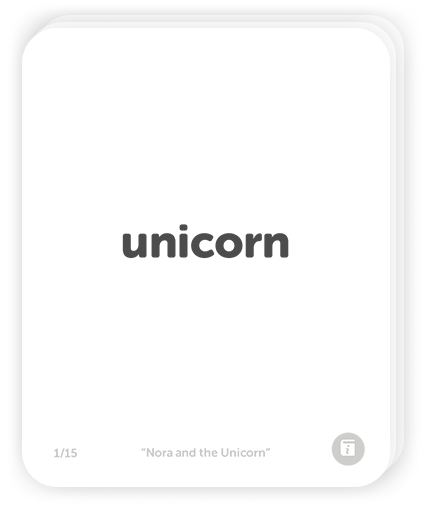
Practice the words in the story with flashcards! Select which words you would like to target (sight words, phonemic target words, or challenge words) and practice the words in the flashcards activity. You can also generate custom flash cards through the error-tracking feature of the app.
Reviewing the words in a story before you read can help increase reading comprehension, reading fluency and improve speech production.
Story Text Settings
Use the story text settings to customize the story screen. These settings allow you to customize fonts and line widths, support eye tracking, and highlight particular word types within the text.
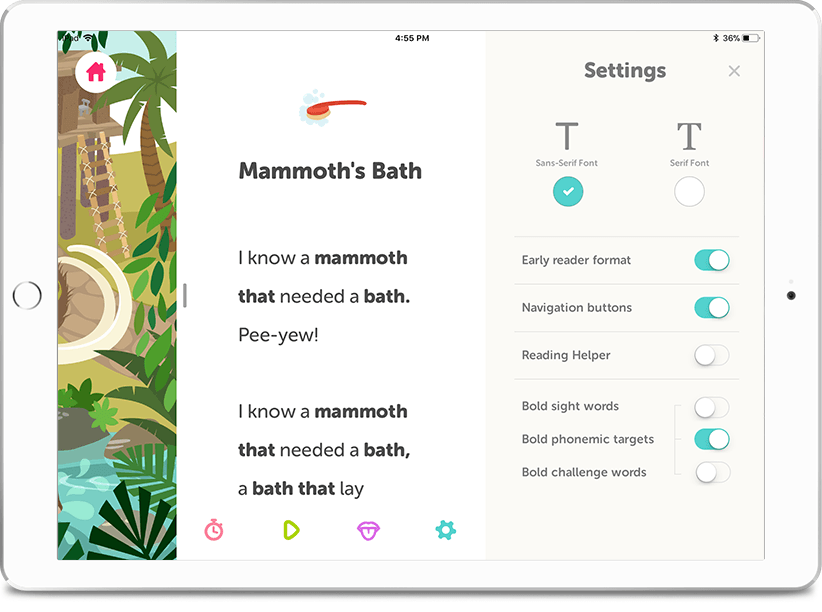
Error Tracking
Record the child reading the 100-word story without interruption. Then, play back the recording and mark their errors.
Marking errors for reading, vocabulary, or speech can be done easily for follow-up learning and review.
Each story comes with a package to

Little Stories is loaded with learning activities that focus on several speech, language, and literacy objectives.
The curriculum portion of this app aids the learner’s comprehension of each story and teaches strategies that can be used across narratives. These learning activities (Story Retell, Sequencing, WH Questions, and Story Talk) help children develop skills such as critical thinking, text structure awareness, and oral communication.
 While our narrative curriculum is serious work, the app is designed to keep the work fun. Watch for our Little Bee—he’ll be there to cheer you along the way!
While our narrative curriculum is serious work, the app is designed to keep the work fun. Watch for our Little Bee—he’ll be there to cheer you along the way!
Comprehension Activities

 Story Retell
Story Retell
The story retell provides a wealth of information about a child’s narrative abilities. Record the child retelling the story. Then, listen to the recording to score the child’s use of story structure and expressive language.
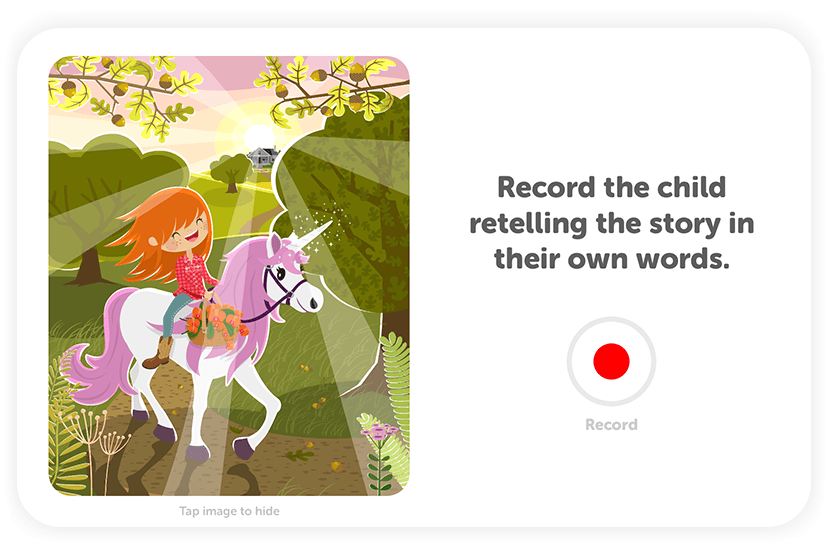
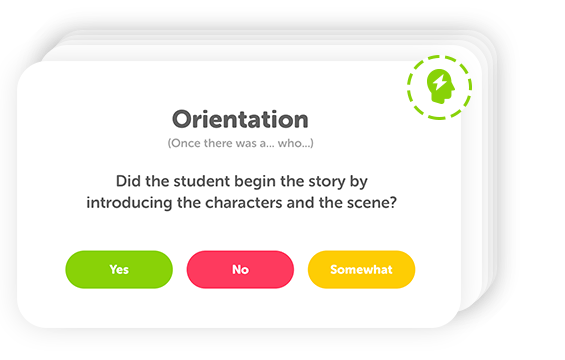
Story Structure
Evaluate the following elements of story structure:
1. Orientation
2. Complication
3. Action
4. Resolution
5. Ending

Expressive Language
Evaluate the following features of expressive language:
1. Nouns & Pronouns
2. Verbs
3. Adjectives & Adverbs
4. Prepositions
5. Delivery
 Sequencing
Sequencing
The sequencing activity teaches story structure by prompting the child to organize four story segments. When a child is able to put narrative elements in order, a text becomes more than random details and occurrences—it becomes a story.
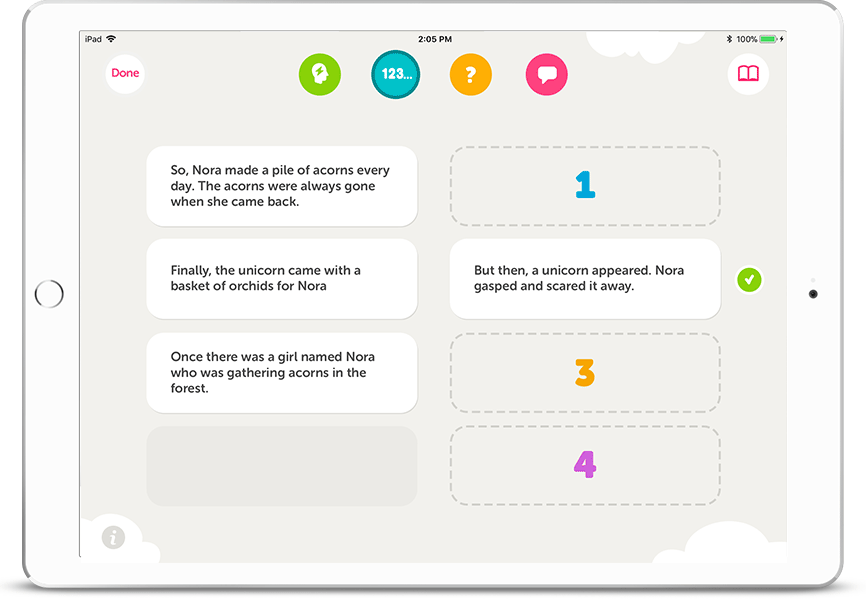
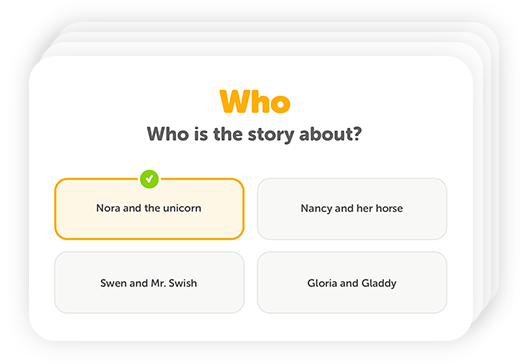
WH Questions
The WH questions highlight key story elements. Little Stories features 4 WH questions for every story in the app.
1. Who is the story about?
2. Where and when does it take place?
3. What is the problem or complication?
4. How is the problem solved?
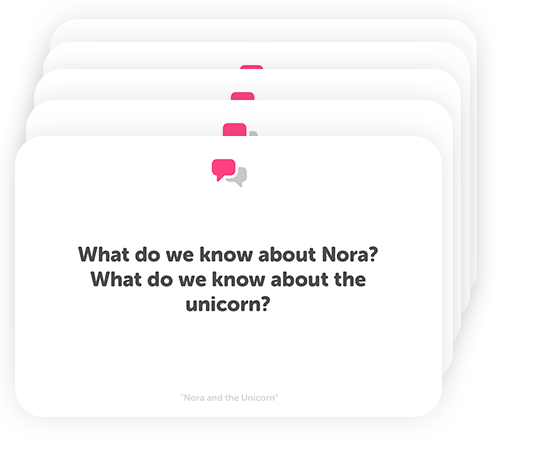
Story Talk
The story talk activity provides 5 question cards for each story. These questions test story understanding beyond the basic elements of story as highlighted in the WH section.
- Story Talk has questions that...
- Involve searching the text for answers.
- Require inferential thinking.
- Let the reader express their opinion.
- Highlight the reader’s experience.
- Invite readers to explore narratives.
Data Collection
We put data at your fingertips! The data collection screens feature session dates, checklists, statistics, and graphs to help you track and measure reading, speech, and vocabulary progress over time.
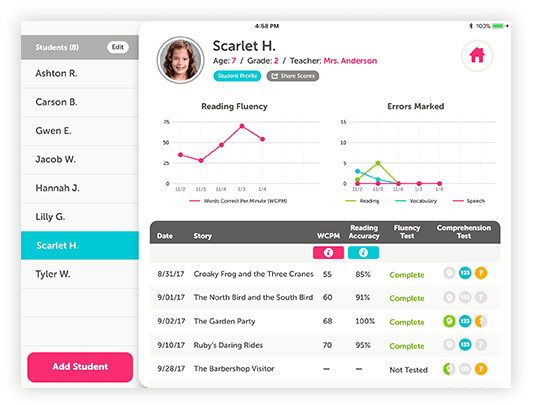
- Sort by session data section:
- Date
- Story read
- Words correct per minute
- Reading Accuracy
- Fluency tests completed
- Comprehension tests completed
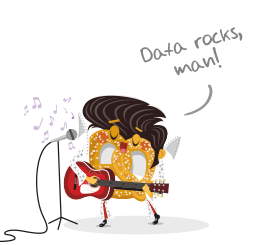
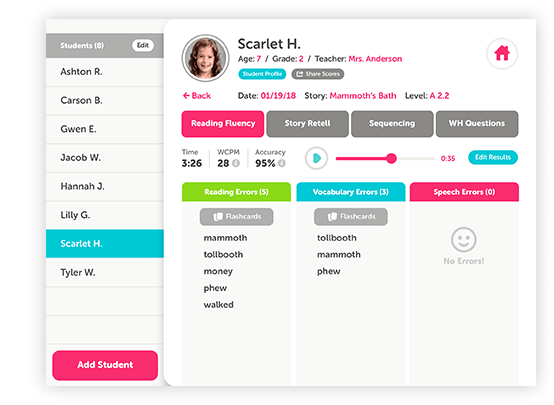
- Session Details (Reading Fluency
section) Words correct per minute - Reading Accuracy
- Reading errors
- Vocabulary errors
- Speech errors
- Listen to the recording
- Edit the results
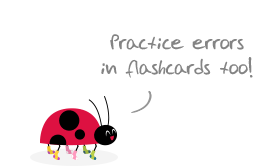
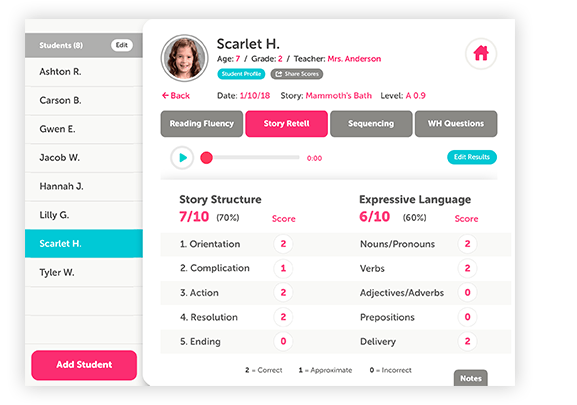
- Session Details (Story Retell,
Sequencing, and WH questions) - Review story structure results
- Review expressive language results
- Listen to the recording
- Edit the retell results
- Review sequencing scores
- Review WH questions scores
- Determine areas for intervention
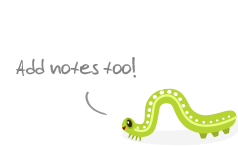

Little Stories is an app
with a lot of
You might say that stories are our mask, cape, and blaster boots. We know how to use stories and we know what they can do.
We could have stopped at creating a whole collection of engaging stories, but we knew that narrative was loaded with powerful potentials for learning. So, we took our stories and made them teachers. As you learn to work with narrative—and we will guide you every step of the way—your teaching will strengthen and your confidence will soar. You will come to work with narrative and children in a whole new way. Perhaps more important than anything else, your learner will soar with you into the wonderful world of story. That’s the power of Little Stories.
And yes, we just had to throw a little bit more into our very big Little Stories package. Your learner will love our coloring activity, and you will love all of the ways we align with the Common Core!
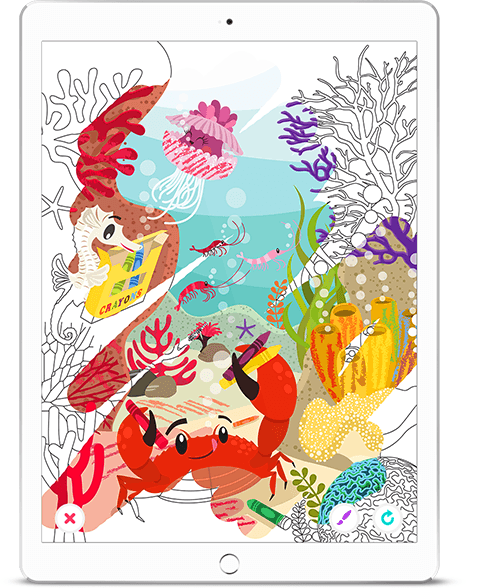
Coloring Activity
Every story illustration in the app can be colored. Select a coloring page and enjoy the magic of having your finger spread beautiful colors and details across the screen.
There are 3 ways to enjoy the coloring activity:
1. Color in the app
2. Print and color
3. Email coloring pages for homework
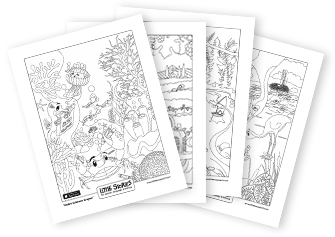
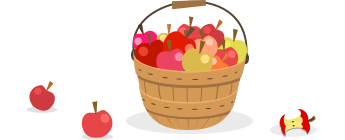
Common Core
Our Little Stories target many of the Common Core standards for grades K-3. For a list of which standards are targeted click here.
The Common Core State Standards Initiative is an educational initiative in the United States that details what K–12 students should know in English language arts and mathematics at the end of each grade.
Common Core Standards Our Little Stories Target:
Kindergarten
Reading: Literature
RL.K.1 With prompting and support, ask and answer questions about key details in a text.
RL.K.2 With prompting and support, retell familiar stories, including key details.
RL.K.3 With prompting and support, identify characters, settings, and major events in a story.
RL.K.4 Ask and answer questions about unknown words in a text.
RL.K.7 With prompting and support, describe the relationship between illustrations and the story in which they appear (e.g., what moment in a story an illustration depicts).
Speaking & Listening
SL.K.2 Confirm understanding of a text read aloud or information presented orally or through other media by asking and answering questions about key details and requesting clarification if something is not understood.
Language
L.K.1 Demonstrate command of the conventions of standard English grammar and usage when writing or speaking.
L.K.1.B Use frequently occurring nouns and verbs.
L.K.1.E Use the most frequently occurring prepositions (e.g., to, from, in, out, on, off, for, of, by, with).
Grade 1
Reading: Literature
RL.1.1 Ask and answer questions about key details in a text.
RL.1.2 Retell stories, including key details, and demonstrate understanding of their central message or lesson.
RL.1.3 Describe characters, settings, and major events in a story, using key details.
RL.1.7 Use illustrations and details in a story to describe its characters, setting, or events.
RL.1.10 With prompting and support, read prose and poetry of appropriate complexity for grade 1.
Reading: Foundational Skills
RF.1.4 Read with sufficient accuracy and fluency to support comprehension.
RF.1.4.A Read grade-level text with purpose and understanding.
RF.1.4.B Read grade-level text orally with accuracy, appropriate rate, and expression on successive readings.
RF.1.4.C Use context to confirm or self-correct word recognition and understanding, rereading as necessary.
Speaking & Listening
SL.1.2 Ask and answer questions about key details in a text read aloud or information presented orally or through other media.
SL.1.4 Describe people, places, things, and events with relevant details, expressing ideas and feelings clearly.
SL.1.6 Produce complete sentences when appropriate to task and situation.
Language
L.1.1 Demonstrate command of the conventions of standard English grammar and usage when writing or speaking.
L.1.1.B Use common, proper, and possessive nouns.
L.1.1.D Use personal, possessive, and indefinite pronouns (e.g., I, me, my; they, them, their, anyone, everything).
L.1.1.E Use verbs to convey a sense of past, present, and future (e.g., Yesterday I walked home; Today I walk home; Tomorrow I will walk home).
L.1.1.F Use frequently occurring adjectives.
L.1.1.I Use frequently occurring prepositions (e.g., during, beyond, toward).
L.1.4.A Use sentence-level context as a clue to the meaning of a word or phrase.
Grade 2
Reading: Literature
RL.2.1 Ask and answer such questions as who, what, where, when, why, and how to demonstrate understanding of key details in a text.
RL.2.3 Describe how characters in a story respond to major events and challenges.
RL.2.4 Describe how words and phrases (e.g., regular beats, alliteration, rhymes, repeated lines) supply rhythm and meaning in a story, poem, or song.
RL.2.5 Describe the overall structure of a story, including describing how the beginning introduces the story and the ending concludes the action.
RL.2.6 Acknowledge differences in the points of view of characters, including by speaking in a different voice for each character when reading dialogue aloud.
RL.2.7 Use information gained from the illustrations and words in a print or digital text to demonstrate understanding of its characters, setting, or plot.
RL.2.9 Compare and contrast two or more versions of the same story (e.g., Cinderella stories) by different authors or from different cultures.
RL.2.10 By the end of the year, read and comprehend literature, including stories and poetry, in the grades 2-3 text complexity band proficiently, with scaffolding as needed at the high end of the range.
Reading: Foundational Skills
RF.2.4 Read with sufficient accuracy and fluency to support comprehension.
RF.2.4.A Read grade-level text with purpose and understanding.
RF.2.4.B Read grade-level text orally with accuracy, appropriate rate, and expression on successive readings.
RF.2.4.C Use context to confirm or self-correct word recognition and understanding, rereading as necessary.
Speaking & Listening
SL.2.1.C Ask for clarification and further explanation as needed about the topics and texts under discussion.
SL.2.2 Recount or describe key ideas or details from a text read aloud or information presented orally or through other media.
SL.2.4 Tell a story or recount an experience with appropriate facts and relevant, descriptive details, speaking audibly in coherent sentences.
SL.2.5 Create audio recordings of stories or poems; add drawings or other visual displays to stories or recounts of experiences when appropriate to clarify ideas, thoughts, and feelings.
SL.2.6 Produce complete sentences when appropriate to task and situation in order to provide requested detail or clarification. (See grade 2 Language standards 1 and 3 here for specific expectations.)
Language
L.2.1 Demonstrate command of the conventions of standard English grammar and usage when writing or speaking.
L.2.1.D Form and use the past tense of frequently occurring irregular verbs (e.g., sat, hid, told).
L.2.3 Use knowledge of language and its conventions when writing, speaking, reading, or listening.
L.2.4.E Use glossaries and beginning dictionaries, both print and digital, to determine or clarify the meaning of words and phrases.
L.2.5 Demonstrate understanding of word relationships and nuances in word meanings.
Grade 3
Reading: Literature
RL.3.1 Ask and answer questions to demonstrate understanding of a text, referring explicitly to the text as the basis for the answers.
RL.3.2 Recount stories, including fables, folktales, and myths from diverse cultures; determine the central message, lesson, or moral and explain how it is conveyed through key details in the text.
RL.3.3 Describe characters in a story (e.g., their traits, motivations, or feelings) and explain how their actions contribute to the sequence of events.
RL.3.7 Explain how specific aspects of a text's illustrations contribute to what is conveyed by the words in a story (e.g., create mood, emphasize aspects of a character or setting)
RL.3.10 By the end of the year, read and comprehend literature, including stories, dramas, and poetry, at the high end of the grades 2-3 text complexity band independently and proficiently.
Reading: Foundational Skills
RF.3.4 Read with sufficient accuracy and fluency to support comprehension.
RF.3.4.A Read grade-level text with purpose and understanding.
RF.3.4.B Read grade-level prose and poetry orally with accuracy, appropriate rate, and expression on successive readings.
RF.3.4.C Use context to confirm or self-correct word recognition and understanding, rereading as necessary.
Speaking & Listening
SL.3.4 Report on a topic or text, tell a story, or recount an experience with appropriate facts and relevant, descriptive details, speaking clearly at an understandable pace.
SL.3.5 Create engaging audio recordings of stories or poems that demonstrate fluid reading at an understandable pace; add visual displays when appropriate to emphasize or enhance certain facts or details.
SL.3.6 Speak in complete sentences when appropriate to task and situation in order to provide requested detail or clarification. (See grade 3 Language standards 1 and 3 here for specific expectations.)
Language
L.3.1 Demonstrate command of the conventions of standard English grammar and usage when writing or speaking.
L.3.1.D Form and use regular and irregular verbs.
L.3.1.I Produce simple, compound, and complex sentences.
L.3.2.D Form and use possessives.
L.3.3 Use knowledge of language and its conventions when writing, speaking, reading, or listening.
L.3.4.D Use glossaries or beginning dictionaries, both print and digital, to determine or clarify the precise meaning of key words and phrases.
The reviews are in!
“This app has been an absolute lifesaver for me, as an SLP with a caseload of 60+ students. I see students from preschool-6th grade. I see mixed artic-language-fluency groups and students of all cognitive abilities and I've used this app with each and every one of them.”
– Kayla, SLP
"I love how this app is simple and easy to use and that I can use this app for every therapy in my day, with mixed groups, and still work on my students' goals. I cannot recommend this app enough!" – Zayra, SLP
“Little Stories Pro is a goldmine of language, literacy and articulation activities! You will not believe how many skills you can target all at once: articulation carryover, WH questions, sequencing, narrative expression, reading fluency -- this app is loaded. And just like Articulation Station, it's beautifully designed, engaging for kids, and so very easy to use. As soon as you open this app up, you know you're going to use it every day. Thank you, Little Bee Speech!” – Dina, SLP
